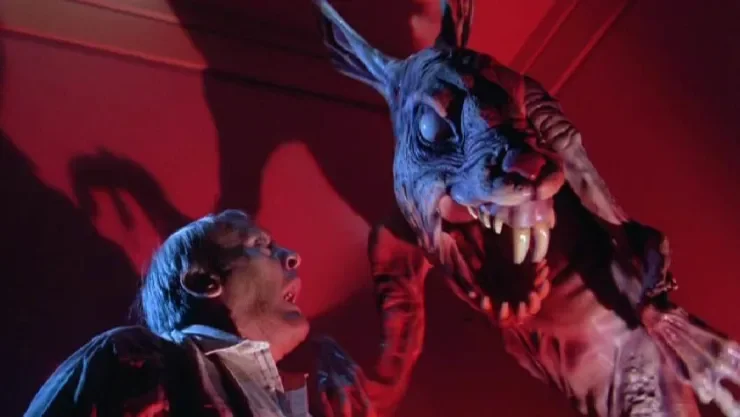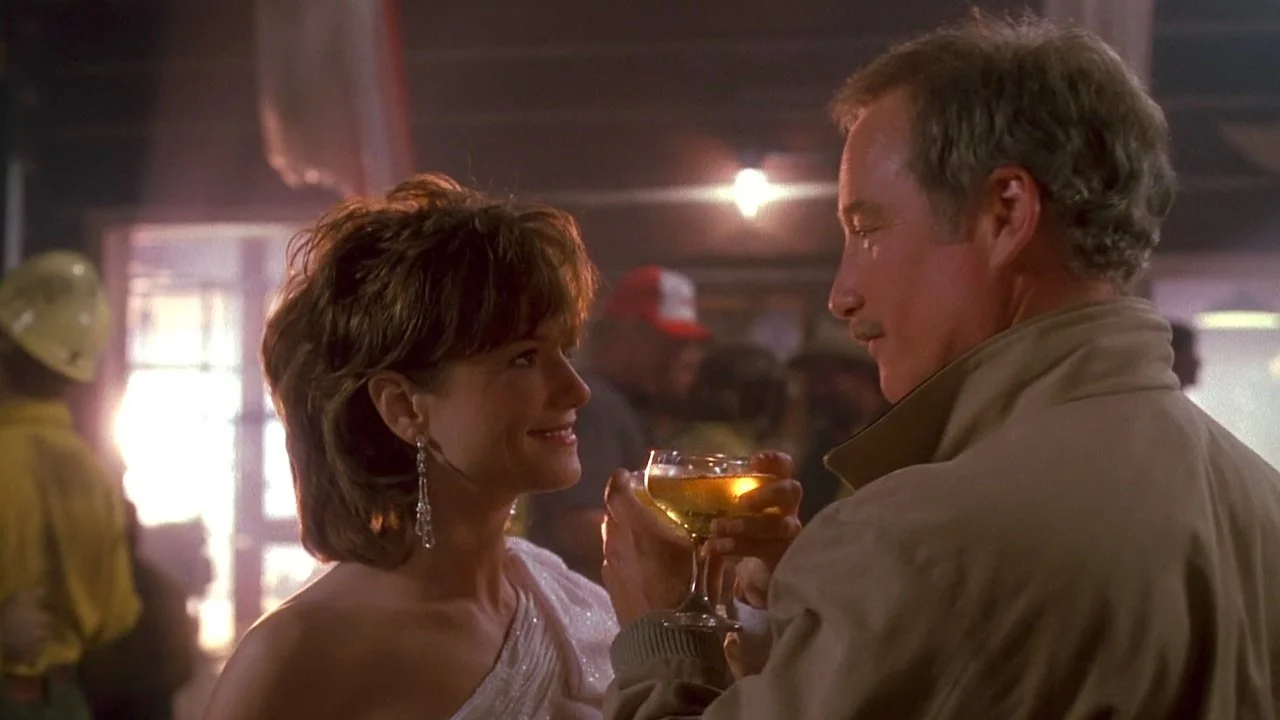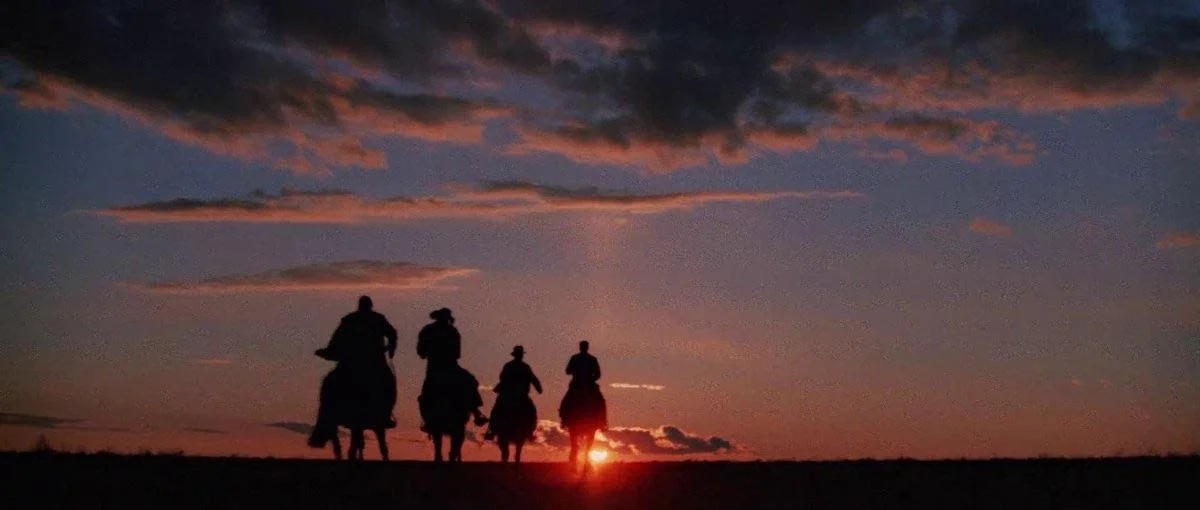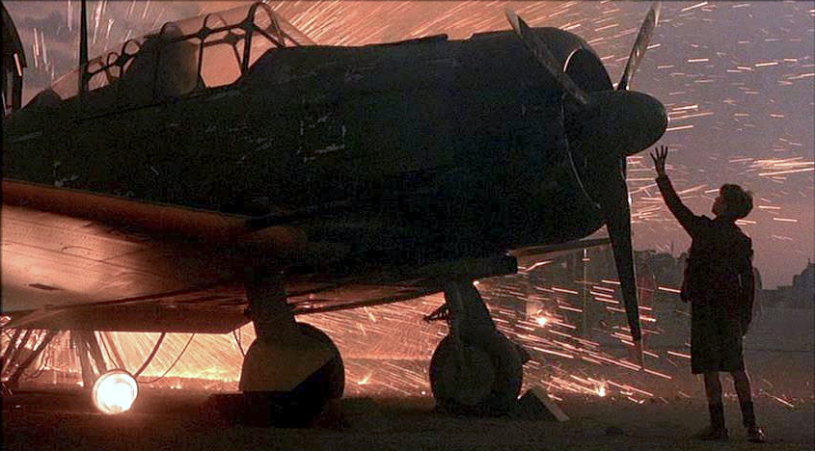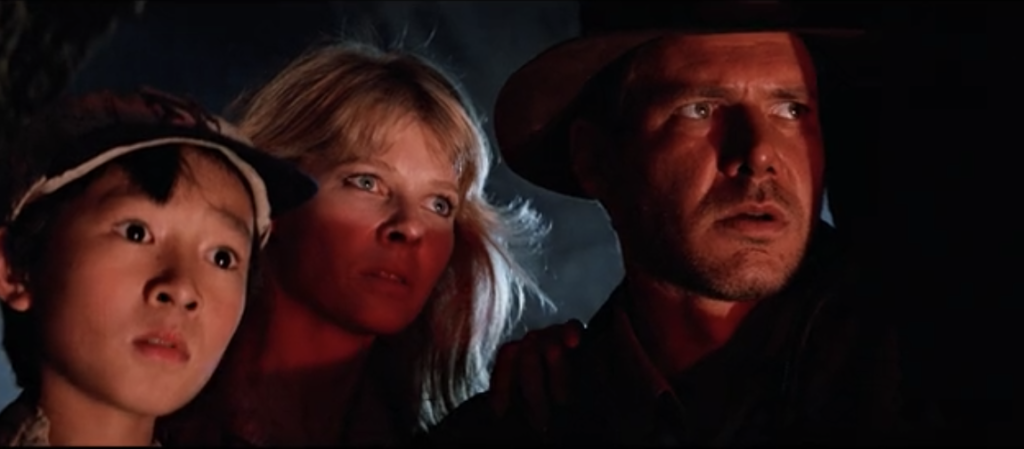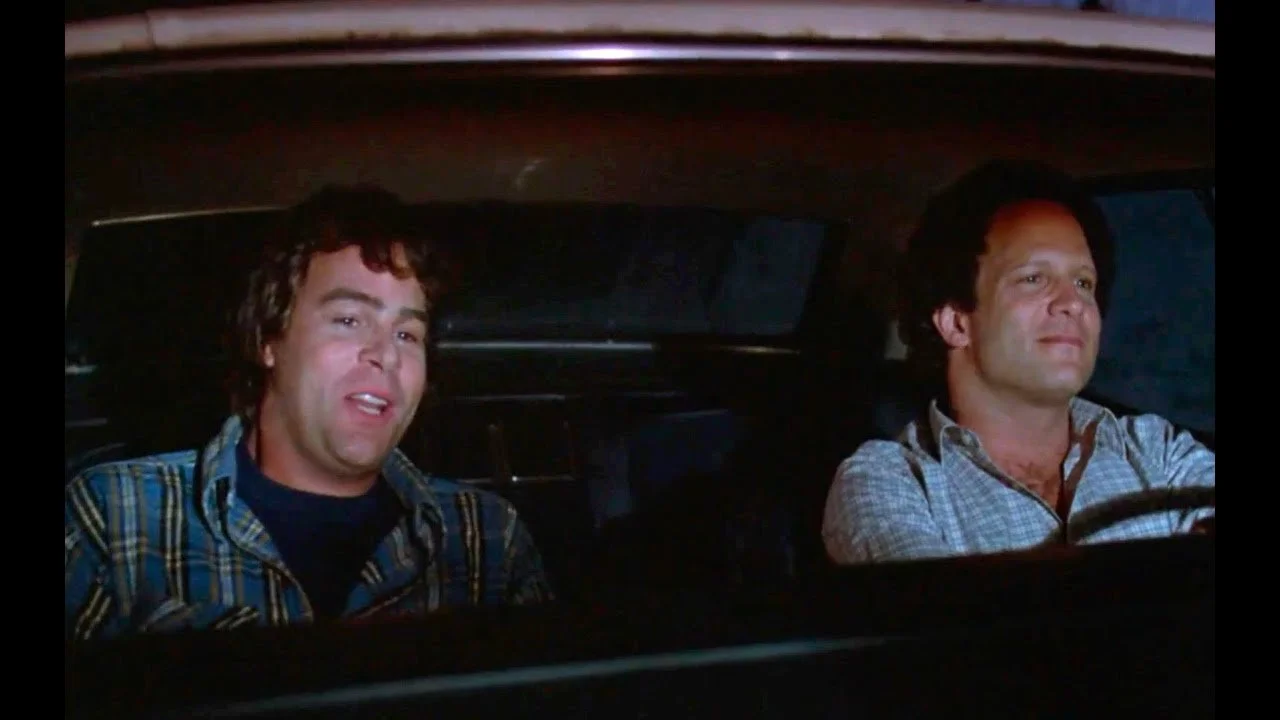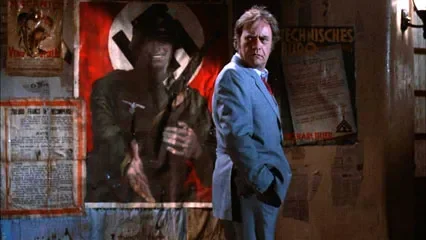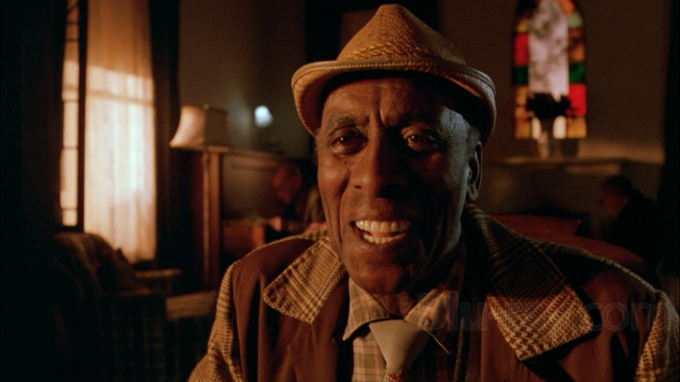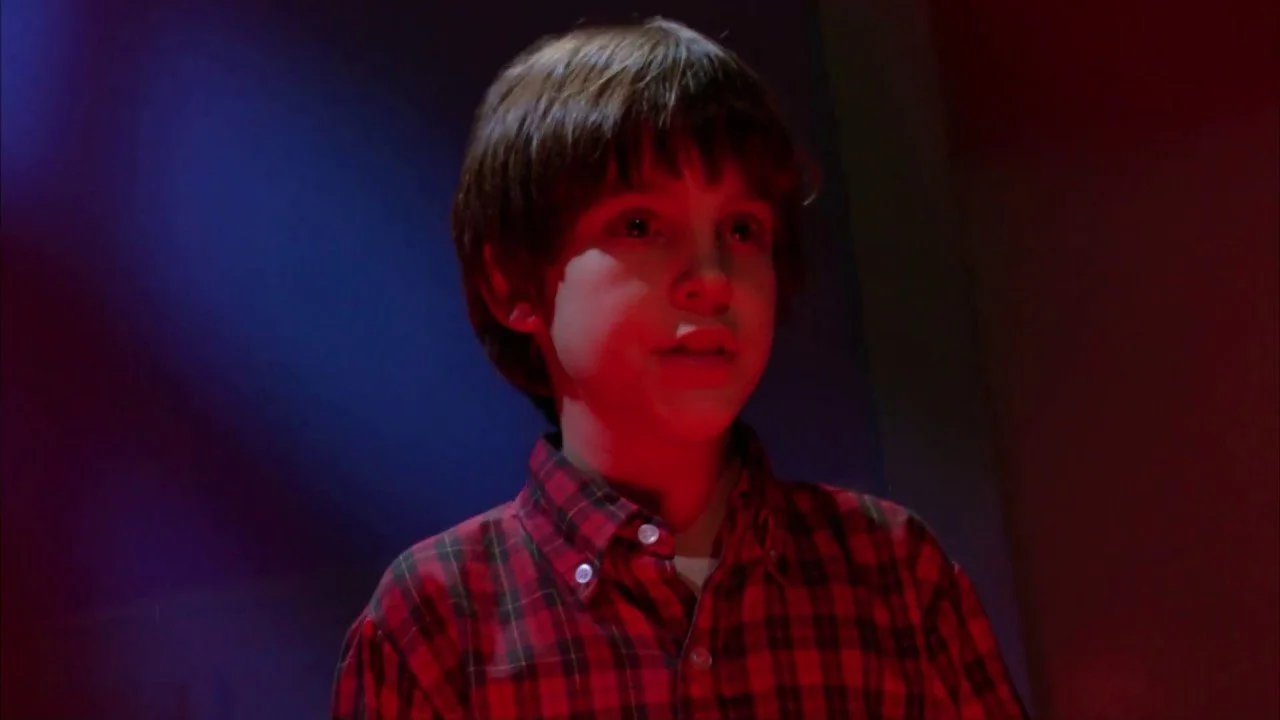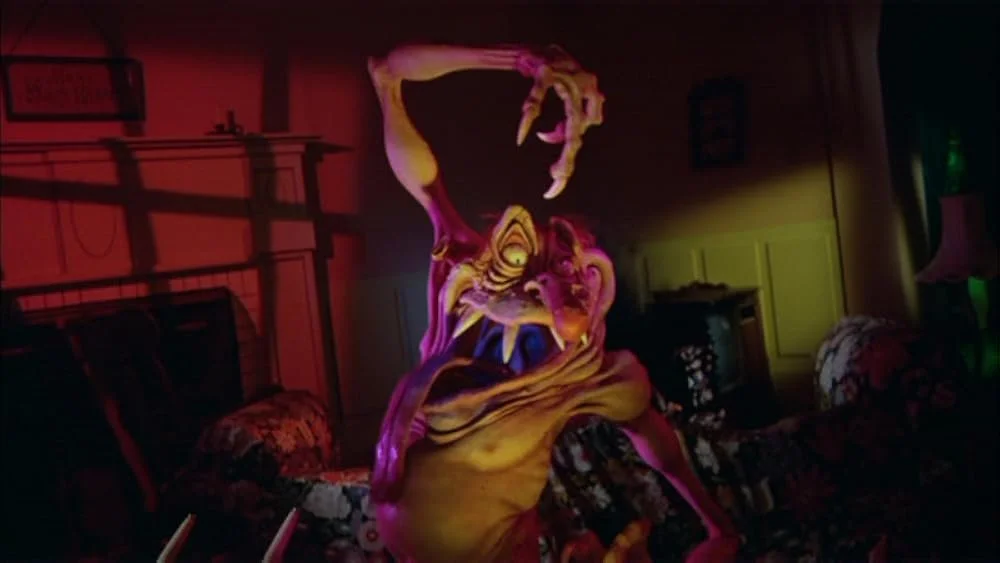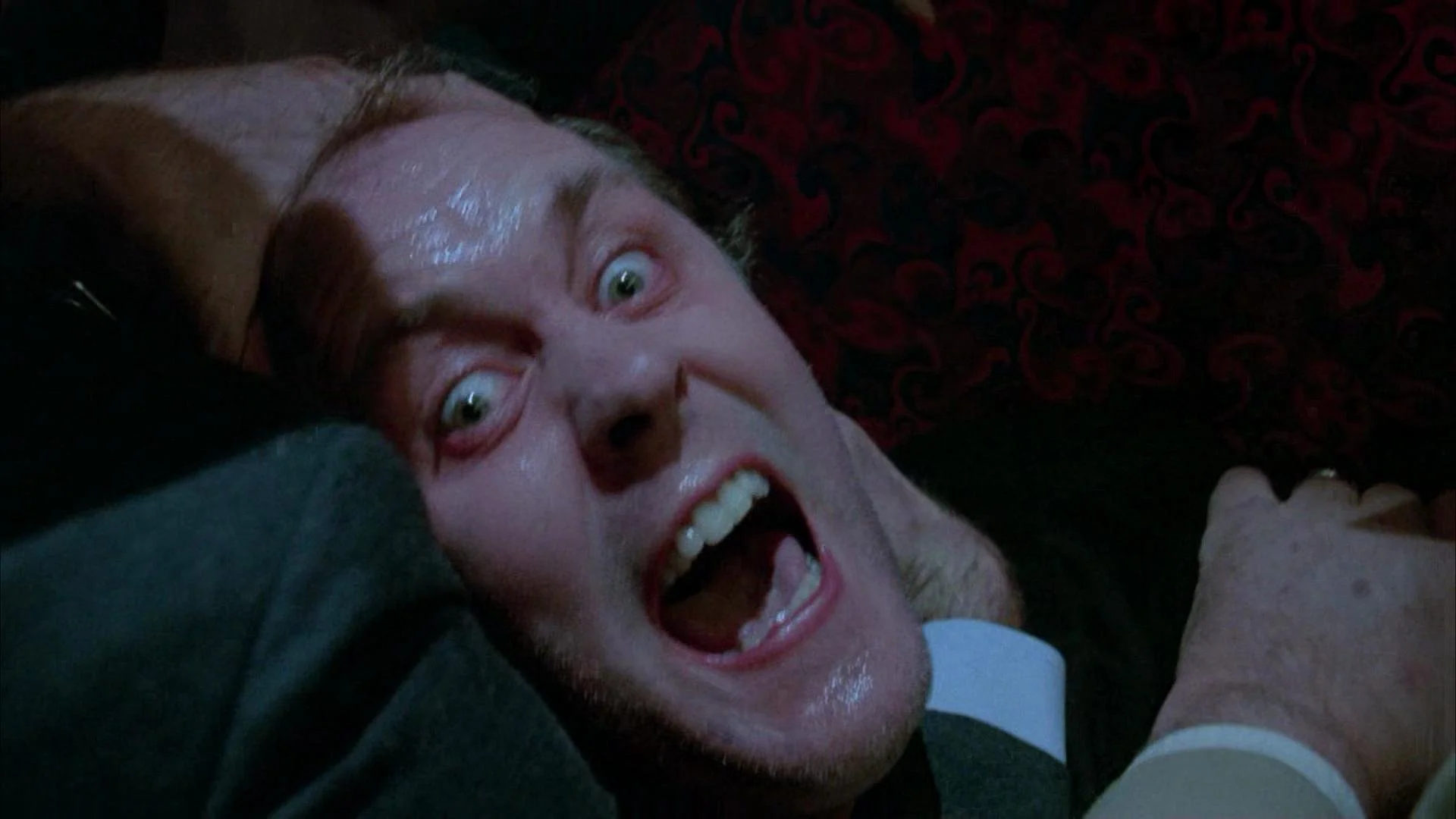Recent Articles
Spooky Spielberg Bonus: Entering the TWILIGHT ZONE MOVIE!
This week, Spielberg Summer goes into overtime with a dip into TWILIGHT ZONE: THE MOVIE! Yes, it’s an anthology film most famous for the behind-the-scenes tragedy that arguably ended the New Hollywood era. Is anything in the movie (including the section directed by Spielberg himself) strong enough to overcome this dark shadow?
Confession: I don’t really know The Twilight Zone. Yeah, yeah, I know, shut up.
I mean, yes, I’ve undoubtedly seen a few episodes. How could you miss it? My mom was a fan of the show, and likely showed me a pair of installments as they came up on TV Land. Even if she hadn’t, much like some of its contemporaries like I Love Lucy or Leave It to Beaver, you can probably find an episode playing on some channel at any point of the day (and in a world of Pluto TV, that probability becomes a certainty). But it was never a mainstay on our television. I’ve always meant to get around to it, but I just haven’t up to this point.
However, I did find myself with an interesting opportunity to dip into the broader world of The Twilight Zone. Because, as I started wrapping up my latest series of Steven Spielberg reviews, this time diving into his 80s filmography, I realized, “oh yeah, wait, he technically helped direct another 80s movie”. That, of course, being THE TWILIGHT ZONE: THE MOVIE, the 1983 anthology film where Spielberg collaborated with John Landis, George Miller, and Joe Dante to recreate a touchstone television series that meant a lot to them all growing up.
Of course, the movie ended up having a much darker legacy, with the untimely (wildly preventable) deaths of a few actors, the dissolution of some friendships, and an extremely deflated, slightly sinister, energy throughout the proceedings as a result. It’s a difficult thing to discuss, and one can easily Google all the behind-the-scenes catastrophes that resulted from its creation (suffice to say though, TWILIGHT ZONE: THE MOVIE wasn’t included in a series called Cursed Films for no reason). But…I admit to being curious about what the actual viewing experience would be for me, me knowing full well how John Landis basically killed Vic Morrow, but not knowing full well much of The Twilight Zone’s biggest hits. It may make for an odd time, but..I had to know.
Besides, it’s October. Seems as good a time as any to extend the Spielberg series one more week. So let’s do it! Let’s enter THE TWILIGHT ZONE: THE MOVIE!
Prologue
Starring: Albert Brooks, Dan Aykroyd
Written by: John Landis
Directed by: John Landis
A driver and a passenger discuss Creedence Clearwater Revival, old TV theme songs, AND their favorite Twilight Zone episodes before one shows the other something really scary…
First off, I was surprised at how much this resembled the kind of scene that Quentin Tarantino would later make a whole career out of. Two recognizable actors? Check! A dialogue-heavy sequence centered almost exclusively around discussion of old media? Check! Classic rock needle drop? Check! Quick and memorable turn at the end? Check, check, check!
Look, I do think it’s a little odd to open the TWILIGHT ZONE movie with a tacit recognition that The Twilight Zone TV show exists in-universe; that kind of meta reference feels a little at odds with the original series. But, beyond that, I thought this was a fairly solid opening salvo. Both Brooks and Aykroyd are in their fine 80’s form, cool CCR song, nice twist at the end (the kind that undoubtedly would have scared me as a kid)...Landis admittedly gets this movie off to a good start! If he had just stopped there, Hollywood history would have changed forever!
Time Out
Starring: Vic Morrow, Doug McGrath, Charles Hallahan, John Larroquette
Written by: John Landis
Directed by: John Landis
Bill Connor is at the lowest point in his life, and he decides to lash out in a racist tirade at a bar. However, he’ll be changed forever as he walks through the door and finds himself having time-traveled to 1940’s Nazi-occupied France. Worse, everyone assumes he’s a Jewish runaway….
Alas, he hadn’t stopped there. He would go on to direct the first segment of TWILIGHT ZONE: THE MOVIE, and now we gotta immediately lean into what makes this movie such an infamous entry in Hollywood canon.
Look, I’m not going to go into the reckless and immoral decisions that led to Morrow and two child actors getting decapitated on the set of this segment; it’s easily the most famous thing about the movie, and the way it essentially destroyed any momentum on its development, Landis and Spielberg’s friendship, and maybe the New Hollywood era? It’s been covered a lot, and for good reason. It’s maybe the worst thing that’s ever happened on a film set, and it’s shocking that the whole affair didn’t end Landis’ career on the spot.
I will say that the onscreen result of this accident, which occurred during the filming of “Time Out”’s original ending, is that the segment now actually has no shape, or even point? We begin with the racist ramblings of Bill Connor (Morrow) at a bar, as he blames blacks* and Jews and immigrants for all of his troubles (a scene that would have been outrageously broad and on the nose if it didn’t now resemble the net average Facebook comment). He stumbles out to find himself in Nazi-occupied France, where everyone assumes he’s Jewish. As he flees the Gestapo, he then finds himself a presumed black man in the clutches of the KKK. Falling down He then awakens in a Vietnamese village, one being massacred by American soldiers. He then arrives back in occupied France, where he’s stuffed into a railcar, off to a concentration camp. Despite him screaming for his friends, who are now walking out of the bar, nobody can help Bill now.
*Well, I’m saying blacks. Connor uses, um, stronger language, utilizing a word that gets said a lot in this segment.
Presumably, the botched scene, where Bill saves two Vietnamese children from the crossfire of American troops, would have provided some sort of catharsis for our main character, as he learns that maybe being passed over for a promotion isn’t the worst atrocity someone can face, providing him some perspective, and perhaps spurring change. We can only presume, though, because “Time Out” in its final form basically has no ending. Like, I was shocked when the movie just…moved on to the next segment.
It’s actually not even a story in its current state. We watch a miserable human being get subjected to cosmic misery, then carted away to die a miserable, torturous death. Cool! Don’t get me wrong; “are avowed racists worthy of redemption?” is a very real question in culture right now, and I suppose, to describe it, one could make the argument that the current ending of “Time Out” is the only just and moral one. And…maybe! But the end result is one of those nasty, punitive stories where there’s nothing to be gleaned from it, nothing to learn, nothing to do. Just suffering being passed down. Couple that with the fact that, oh yeah, the segment is compromised because the director killed three people, and I cannot imagine a more catastrophic, confusing start to a movie that should have been a nice slice of anthology fun.
Although, if you’ve ever wondered what it would sound like if John Larroquette said the N-word with a hard R, do I ever have a movie rec for you!
Kick the Can
Starring: Scatman Crothers, Bill Quinn, Selma Diamond, Helen Shaw
Written by: George Clayton Johnson, Richard Matheson, Melissa Matheson
Directed by: Steven Spielberg
Here it is, the segment directed by the man of the hour, the reason I’m even reviewing this movie in this space in the first place, a nice dose of whimsy and sentimentality after the bitter flavor of the first segment!
Aaaaaand…it’s the worst one of the whole movie. Damn!
It’s not to imply that “Kick the Can” is unwatchable or anything. A direct remake of an iconic Twilight Zone episode, it has a sweetness to it that nothing else in the movie really has, which makes it presumably a good match between material and director. Scatman Crothers puts in his usual lovely and disarming performance, even if his role actually really compromises the story (more on that in a bit). Finally, unlike the story of Bill Connor, the story here is something I think we can all connect and see ourselves in: I remember at the age of 12 feeling like childhood had completely passed me by. I can only imagine what 82 will feel like.
But…”Kick the Can” feels fairly surface-level to me, and a little beneath what Spielberg was already capable of. The direction is functional, if pedestrian, although I’m willing to extend Steven a ton of grace on this one. A serious friendship was violently crumbling during the production of this damn movie, after all, so I can forgive him for not feeling especially creative. But I get the feeling that, even if Spielberg were on his A+ game, “Kick the Can” as written would feel below par.
I have not seen the original episode and, thus, cannot compare the two versions. However, I do suspect I would enjoy the TV episode more. In that iteration, a nursing home resident discovers the secret of youth: acting young. It sounds like the “you’re only as old as you feel” concept made literal: the idea of everyone turning into children and running off into the woods, freed from the perception of what being old is supposed to feel like (again, this is only my interpretation of the episode based off a summary on Wikipedia) is a strong one.
In the movie version, though, a magical new resident kinda…casts a spell on the residents to turn them into kids, then they all realize there are real benefits to being old (like their families recognizing them, or maintaining their current memories), and most turn back into their normal ages, save one. One particular crotchety resident, however, realizes from the experience that, hey, he doesn’t have to act old just because he is. It feels like two stories reaching the same conclusion, and there’s certainly nothing wrong with pointing out that, hey, youth is often severely overrated! But I think the way the movie version arrives there is needlessly complicated; I won’t weigh in on whether or not Crothers’ character, as charming as he is, counts as perpetuating the “Magical Negro” trope or not, but I do think him being something akin to a wizard needlessly obfuscates a story that felt quite literate without it. Mr. Bloom is ultimately just not really needed, and felt like an added device that allowed for Matheson to put his own stamp on the story.
Is “Kick the Can” better than “Time Out”? Yes, in the sense that it’s a complete thought, although it’s a real toss-up as to whether I prefer a finished story that isn’t very clear or, really, all that interesting, versus a very provocative story that ends halfway through because the guy telling me the story decided to kill three people instead. Who’s to say?
Luckily, TWILIGHT ZONE: THE MOVIE picks up big time after this…
IT’S A GOOD LIFE
Starring: Kathleen Quinlan, Nancy Cartwright, Kevin McCarthy, William Schalert
Written by: Richard Matheson
Directed by: Joe Dante
Helen Foley takes a little boy, Anthony, from a roadside bar back to his family’s house. Everyone seems congenial and inviting. They also seem a little too accommodating to Anthony’s particular habits, like watching TV all day, or eating insane junk food for dinner. More than anything, they seem terrified of the child…
Aaahh…now that’s the good stuff.
The second half of TWILIGHT ZONE: THE MOVIE provides us adaptations of two of the most recognizable episodes of The Twilight Zone of all time, stories saturated enough in popular culture that I instantly went “oh, this is one where Bart Simpson can turn people into whatever he wants using his mind” as soon as this one got going. Again, never seen The Twilight Zone! But, the idea of a child who has boxed in the adults around him to serve his every whim, lest there be dire consequences, is such a potent (and timely) idea that it’s no wonder it’s remained in the public consciousness over sixty years later.
Interestingly enough, this adaptation of “It’s a Good Life” also kind of feels like an episode of The Simpsons. This segment feels so much like a cartoon, which is such an arresting, and appropriate, choice to make. But what else would you expect from a director like Joe Dante? Dante is one of those directors whose filmographies I really ought to do a deeper dive on one of these days, but suffice it to say that “putting the world of cartoons into the world of reality” is one of his signature touches, elevating even his lesser works (like, SMALL SOLDIERS isn’t exactly a good movie, but, boy, are those damn toys memorable). The way little Anthony’s house looks, these bright walls at odd angles…it just hits a specific spot in my heart.
And the fucking puppets. The depiction of literal two-dimensional cartoon characters being brought into 3D could go any number of ways. Here, though, Dante picks the exact right blend of “fun and tactile” with “grotesque”. Look at that fucking rabbit!
Or whatever the fuck this guy is supposed to be!
The design here is so fun and interesting to look at, even as you kind of want to look away. There’s not a doubt in my mind that this would have been seared into my brain as a kid, had I seen it at the time.
What really makes “It’s a Good Life” stand out over the first two segments, though, is that it feels like a complete story with something to chew on. Helen’s journey from Point A to Point B here is actually pretty interesting; she starts off as a somewhat demure teacher who appears, for all intents and purposes, lost. By the end of the twenty-or-so-minute runtime, she ends up being the only adult Anthony seems to trust, someone who will help cultivate his powers, not run from them. Anthony, it turns out, controls people with his mind because he’s afraid of being abandoned. In this sense, Helen and Anthony are well-matched. She won’t abandon him. They need each other. As they drive off, life sprouts all around them. Beautiful, bright flowers spring to life all along the road.
This ending also seems to be a deviation from the episode’s original ending, where the little kid causes a snowstorm that will assuredly doom and starve the rest of the town. Nice bleak little note, to be sure, but the movie segment’s ending really worked for me, too. Somehow, this insecure, demonic child (who removed his sister’s mouth and left her basically comatose in front of a blaring TV! He’s a real asshole!) is able to find someone who’s willing to cultivate him. Dante turns this into almost like a fairy tale.
Of course, there’s something to be said for staying faithful to a classic episode…
NIGHTMARE AT 20,000 FEET
Directed by: George Miller
Written by: Richard Matheson
Starring: John Lithgow
John Valentine is a nervous flyer who finds himself on a flight stuck in a severe storm. Despite attempts from staff to calm him down, he can’t settle. And that’s before he sees the gremlin wreaking havoc on the plane’s wing…
I’m going to let you all in on a little secret.
I’m a pretty good flier. No, my brain doesn’t accept the science behind how aircrafts stay in the air (I give it up to magic). No, I cannot quite turn off the part of my mind that thinks turbulence can take out an airplane (though, to be clear, it basically can’t). But, on the whole, I enjoy the absolute miracle that is being in the air enough, especially when we splurge for good seats and increased alcohol service, that I’m actually a pretty chill flyer.
Unless turbulence hits just right. Then I get vertigo and I am essentially a nightmare. Seriously, I get sweaty, I cannot stand up straight, all I want to do is be anywhere but a tight metal tube…
Suffice to say, I deeply related to Lithgow in this segment.
Again, we have a section of the film based on one of the most famous episodes of The Twilight Zone ever, maybe the most well-known segment the show ever did. Once again, I have The Simpsons to thank for my working knowledge of the major beats, although I am aware that the original episode starred William Shatner* as the airline passenger who starts losing his mind at the sight of a gremlin wreaking havoc on his flight’s wings, and oh man, if ever there was an actor who is built for the kind of paranoia-fueled performance this story demands, it’d be him.
*Shatner, by the way, is an actor who I think gets kind of a bad rap, thanks to decades of parodies and imitations that depict him as. Having. This. Staccato. Style. Of Speaking. But, if you actually watch an old episode of Star Trek or something, he doesn’t really sound like that at all? It’s a classic case of an exaggeration becoming the standard over the course of time.
But Lithgow does a pretty good job, too! I’m not a guy who thinks everything Lithgow does is good (I’ve mentioned it before, but he has that “fake British guy” energy that kind of grinds my gears sometimes), but his sweaty, shouty, claustrophobic freakout really worked for me here. I just kinda bought him as a dude who’s having the worst time; on top of being on a horrifically bumpy flight, I think if I saw a fucking gremlin out my window, I’d be as much of a blubbering mess as Lithgow is here.
The whole segment was probably my favorite for two other reasons. One, the gremlin is another triumph of handcrafted puppetry. It looks gloriously horrendous and tactile, in a way that would just never be achieved had the movie come out in 2025 (one can only imagine the CGI monstrosity we would get now). Two, George Miller’s masterful depiction of closed-in spaces, and the fear that arises from them, is as unshowy as it is unparalleled. He allows himself a flourish here and there (my favorite was a very quick cut of Lithgow with comically popped eyes during the initial reveal of the gremlin), but otherwise, he keeps it grounded and grimy here, making the airplane feel like some sort of horrifying tomb.
And, of course, Aykroyd’s quick cameo at the end as the ambulance driver (who appears to be the same guy in the prologue), brings the whole movie full circle in a way that seemingly tries to make you go, “hey, maybe you enjoyed the entire thing, instead of just the last fifty minutes”. It’s a trick TWILIGHT ZONE: THE MOVIE almost gets away with. But then, the credits for Landis’ portion comes up and you’re left with the same weird feeling you had an hour ago.
Overall, TWILIGHT ZONE: THE MOVIE is a wildly mixed bag, one that gives us a pair of great segments by two wonderful directors of the era, a really, really disappointingly inert segment by a director who should have been able to provide more, and a segment where three people were killed. What is one to make of an anthology film with such wild pendulum swings? Was there value in the movie being released at all? Maybe; again, the last two are really great. But the whole thing is infused with such noxious energy that it’s worth considering whether it would have been better for the movies to have just been chucked into the actual twilight zone, only to be stumbled upon by some poor fool needing to learn some ironic lesson.
Still, I really loved that scary rabbit puppet.


